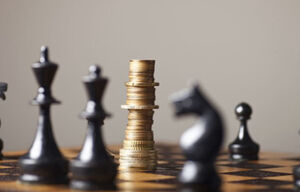The end of negative official interest rates came much sooner than anticipated at the beginning of the year. The question is, what comes next?
The Swiss National Bank (SNB) announced today that it was raising its benchmark interest rate by 75 basis points to 0.50 percent, effective tomorrow, ending a period of negative interest rates that lasted longer than the central bank initially expected.
The last time the SNB raised rates by that amount was in 2000, but that was for very different reasons. Today's hike was undertaken to counter «the renewed rise in inflationary pressure and the spread of inflation to goods and services that have so far been less affected,» SNB President Thomas Jordan told a media gathering today. In 2000, it hiked rates in order to counter an asset price bubble.
Longer Than Expected
Negative rates were introduced in 2015 when the SNB was forced to give up its policy of defending the Swiss franc against the euro. Since then other factors have intervened to keep rates negative. Jordan said at the time of the decision to push rates into negative territory we «did not expect they would last that long.» Nevertheless, he welcomed having the tool of negative rates at the SNB's disposal and that «on the whole, however, negative interest has proved its worth.» He also didn't rule out using it again should conditions warrant it.
The SNB's decision to raise rates at its June meeting was seen by some as prompting the European Central Bank to raise rates. In any case, it could be viewed as a tactical move that gave the SNB more maneuvering room to exit negative rates.
Yesterday, the US Federal Reserve hiked rates by 75 basis points, pushing its target range to 3.0 to 3.25 percent, and gave a clear signal that there is more to come should inflation persist. The European Central Bank hiked its policy rate on September 8 by 75 basis points as well, and the Bank of England just announced a rate hike as well.
Neither the Fed, ECB nor SNB ruled out further increases, and with the SNB moving pushing rates out of the negative territory. The bank of Japan opted not to exit its negative interest rate regime, even in the face of the highest core consumer prices in three decades.
Risk «Cocktail»
Asked if the 75 basis point hike was appropriate, Jordan said that certainly, the SNB could have hiked more or less than it did, but that the move was the correct one given the «cocktail» of risks facing not only the Swiss but the global economy. Moreover, in Switzerland, in terms of monetary policy, you cannot separate interest rates from the Swiss franc exchange rate.
Jordan noted that the Swiss franc appreciated by around 7 percent in trade-weighted terms since its last policy assessment. That helped tighten monetary conditions and dampen inflationary pressure. As part of the policy to set appropriate monetary conditions, the SNB remains willing to be active in the foreign exchange market. And that could go either way.
If the franc were to experience «excessive appreciation», Jordan said «we would purchase foreign currency,» and were the opposite to be true «we could consider selling.»
Easing the Transition
In order that secured short-term Swiss franc money market rates to stay close to the policy rate, the SNB is adjusting its approach. One aspect is a two-tiered remuneration approach whereby sight deposits up to a certain threshold will earn the SNB policy rate. Deposits about the threshold earn zero percent. This mechanism «creates an incentive for account holders to carry out money market transactions with each other even in a situation of excess liquidity,» explained SNB governing board member Andrea Maechler.
A second element will use SNB bills and repo transactions to absorb the extra liquidity through the open market operations.
Inflation Forecast
The SNB also revised its inflation forecasts higher, and now foresees 3.0 percent annual inflation for this year, tweaking it from 2.8 percent in its June forecast. It sees inflation next year slowing to 2.4 percent, although that is a faster pace of inflation than it envisaged in its June forecast for 1.9 percent. Looking to 2024, consumer prices are seen at 1.7 percent, according to the forecast.
The SNB thinks its rate hike in June and today are helping in the fight against inflation, saying that without today's rate increase, the «inflation forecast would be significantly higher.» Overall, at the end of the forecast horizon, the SNB expects inflation to be at 2.0 percent which is what it considers price stability.

In August, Swiss annual inflation was running at 3.5 percent compared to the same time a year ago. On a harmonized basis, which makes inflation comparable with EU measures, it rose 3.3 percent annually. In the Euro area, annual inflation was 9.1 percent in August. Energy prices are a particular issue for both Switzerland and the EU, but one thing in Switzerland's favor in that regard is that it has a more favorable energy mix.
Central Bankers Out of Touch
In a report earlier this month, former UBS chief economist Klaus Wellershof said that there is a more relevant way to measure Swiss consumer inflation, as finews.com reported. By applying the methods of the Austrian statistical office to the price survey of the Swiss FSO, Wellershoff calculated an inflation rate for Switzerland of 5.9 percent, almost double the official figure. Austrians calculate a separate inflation rate for the direct expenditures relevant to a basket of household goods.
What energy prices make evident now is the difference between headline and core inflation, the latter which strips out energy prices. In the Eurozone, the measure of core inflation excluding fresh and seasonal food was 5.7 percent whereas, in Switzerland, a similar measure was 2.0 percent.
The reason the SNB takes a longer view is that short-term inflation is affected by special factors, with the gap disappearing over time, Jordan pointed out.




































